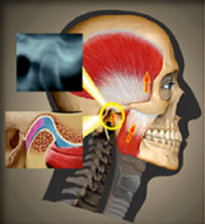One of the largest challenges that our office faces, in being able to provide definitive treatment for temporomandibular disorders, is the issue of insurance benefits. Insurance plans vary as to what benefits are available for treatment provided in our office. Therefore, it will be important to discover what benefits are available under your plan. We will try to help you determine that.
Even though Dr. Higdon is a dentist. because the treatment that we provide usually does not involve treatment of teeth, but addresses joint and muscle issues, benefits are usually not available under your dental insurance plan. If you have any benefits available for our treatment, it is more likely to be covered under your health care plan. However, under your health care plan, benefits may be limited in various ways or may be nonexistent.
The Basis of Benefits Under Your Insurance Plan
Patients sometimes ask why their health care insurance doesn’t provide benefits for treatment in our office. They often feel that because this is a real need, it should be covered. It must be understood that it is not what a patient may needs that determines what benefits are provided under insurance plans. The benefits that are provided under any plan are based on the amount of premium that is paid, usually by an employer. More benefits would available if the employer is willing to pay a higher premium. But because employers usually want to keep their health care costs as low as possible, most health insurance plans have limits of benefits in certain areas. The treatment that we provide is one of the more common areas in health care plans where benefits are either limited or nonexistent.
For this reason, insurance benefits for temporomandibular disorders (TMDs) have historically always been limited, compared to benefits for other medical and dental care. A few traditional health insurance plans have paid fairly well, some have paid nothing, and there has been everything in between. This has meant that you, as the patient, are left with a financial decision. Are you were willing to pay for the portion of the service that are not covered by insurance, or will you forego the needed treatment?
For insurance companies to remain competitive in the insurance marketplace, they have continued to reduce benefits and have further restricted access to certain types of specialized care. Under some plans, patients are told what type of care is available to them, as well as which doctors they can see for the care that is needed. To an uninformed patient, this may not appear to be a reason for concern. However, for temporomandibular disorders under these plans, the type of care that is most appropriate for most patients, which is non-surgical treatment, is often not available. Often under these plans the only doctors available, typically, are oral surgeons, who usually do not provide non-surgical care. For over 90% of patients with a TMD, the type of treatment that we provide is the most effective and surgery is not only inappropriate, it is ineffective and unnecessary.
Gap Exception Option to Obtain Benefits
Because doctors who provide appropriate non-surgical care for TMDs, such as our office, under these plans are typically not on the panel of “preferred providers”, it is often possible for us to submit an appeal to the insurance company and request a “GAP Exception” for coverage; meaning that, if this appeal is approved, our office would be paid as if we were on the panel of preferred providers.
If you inquire about your “TMJ” benefits under your plan, be sure to ask about whether their preferred providers for “TMJ” treatment are all surgeons. Because it is often the case that the panel of preferred providers are entirely oral surgeons, that would be a reason for us to request a “GAP Exception”, since surgeons typically do not provide non-surgical treatment for these conditions.
If you should inquire regarding your benefits for TMD treatment under your plan, also be sure to ask if any benefits would be paid to non-preferred providers. In some cases under a “preferred provider” plan, a non-preferred provider (one not on their closed panel of providers) can provide care but the benefits will be somewhat less than would be the case for a preferred provider.

